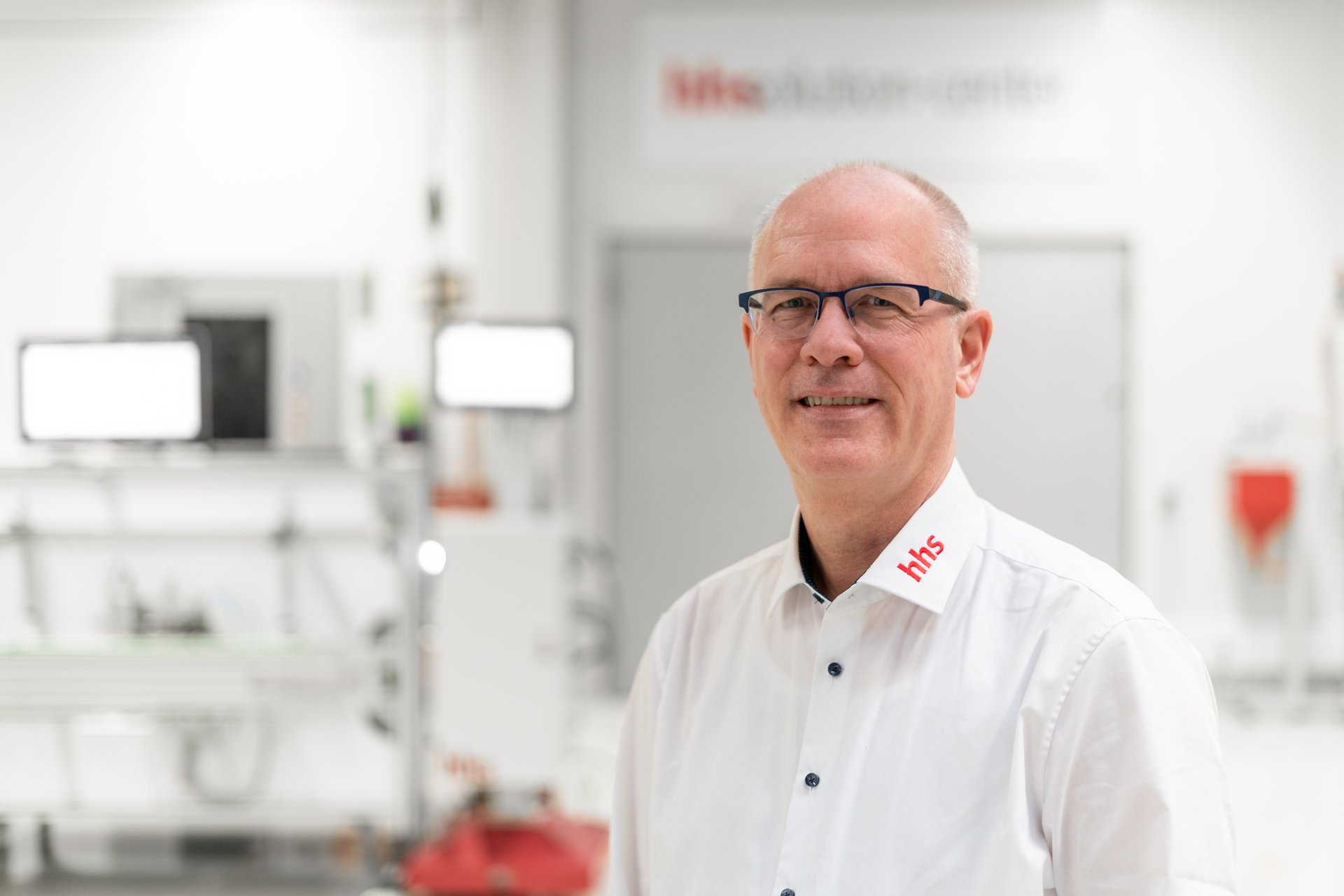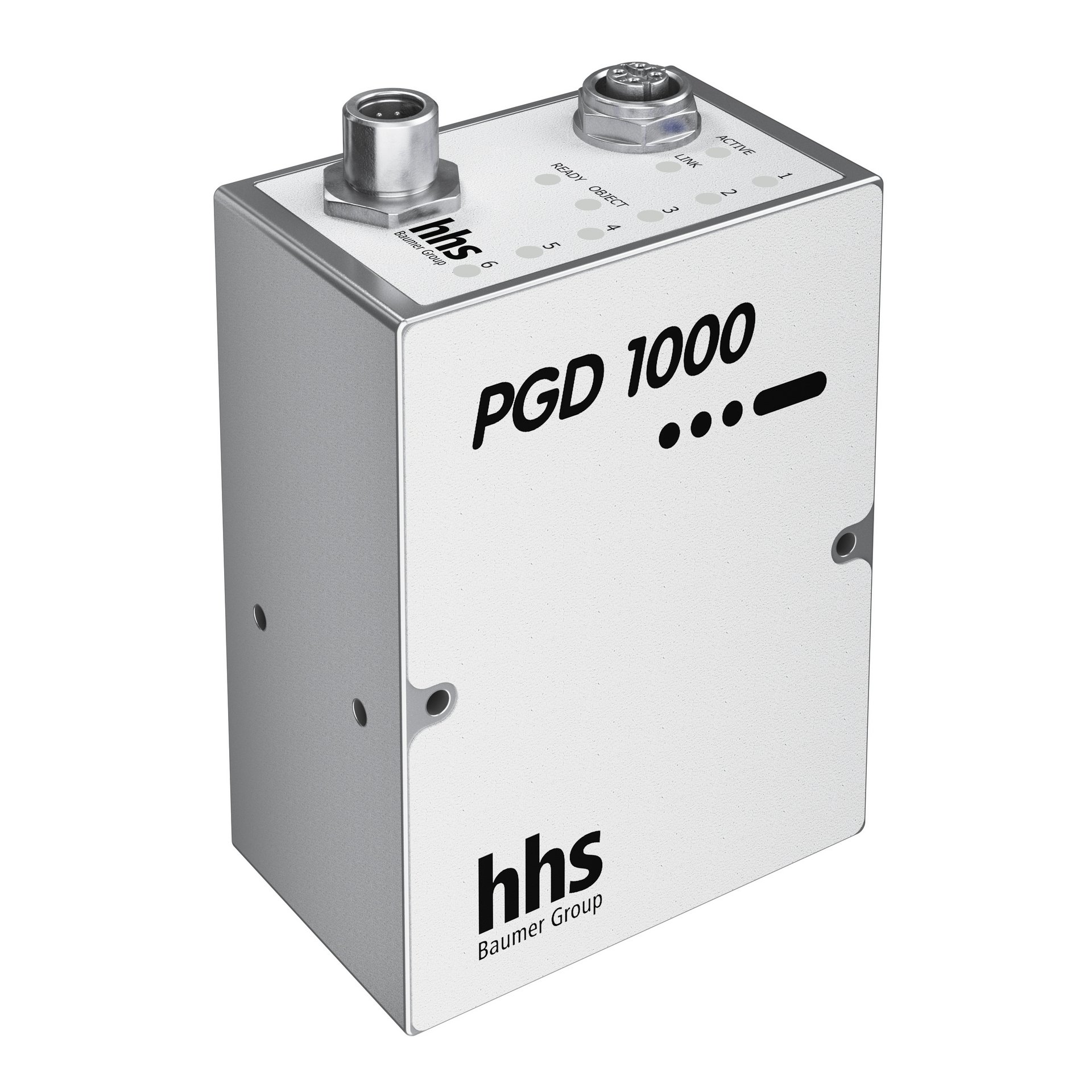Volume 06
Adhesive monitoring combines ecology, economy and efficiency in corrugated production
In our 𝗘𝗰𝗼 𝗧𝗮𝗹𝗸𝘀 series, various people in management positions at Baumer hhs get an opportunity to share their personal insights on the subject of sustainability. In exclusive interviews, they shed light on Baumer hhs's past and ongoing steps to promote sustainability, and they explain exactly how our innovative solutions help customers to minimise their ecological footprint while making production processes more efficient. 𝗘𝗰𝗼 𝗧𝗮𝗹𝗸𝘀 – Inspiring insight into sustainable innovation and responsibility.
In this Eco Talks episode, Thomas Walther, Corporate Strategy & Innovation at Baumer hhs GmbH, is talking about combining ecology, economy and efficiency in corrugated production. Thomas Walther brings over 30 years of experience in printing and packaging to Baumer hhs, where he is responsible for strategy and innovation. His focus is on systematic innovation and measurable progress in sustainability. As a co-lead for several work streams in the 4evergreen alliance industry initiative he is strenghtening the position of fibre-based packaging. With a legal background, he bridges the gap between technology and changing regulations, thereby driving the sustainable development of the packaging industry.

Florian Lemke: Baumer hhs is known as a reliable partner in the packaging industry. What are the driving forces behind innovation for you and your team?
Thomas Walther: We’re motivated by our goal of developing innovative products that are sustainable in every respect. To us, sustainability means more than environmental responsibility. It means that our customers can work cost-efficiently while maintaining process reliability, and that people can operate our systems simply and safely.
One example is our PGD 1000 sensor for monitoring adhesive, which has rapidly become established in the corrugated industry and is now considered the new standard.
Florian Lemke: Let’s go into some detail on the PGD 1000 sensor. What makes it so special?
Thomas Walther: Let me begin with the gluing process itself. Our goal is to apply an adhesive as precisely as possible. With the PX 1000 cold glue application head, we’ve taken a big step towards reaching this goal because it largely eliminates gluing errors and contamination compared to its predecessors. Even so, we still have to monitor application because the later an error occurs, the more expensive it gets: A box that breaks open can destroy what’s inside, and any problems erecting the boxes can disrupt the entire process.
This is where the PGD 1000 comes in. It detects incorrectly glued boxes during production, and it does so with unprecedented reliability. Its unique feature: It works with a special optical spectrum. The sensor reliably detects adhesives that don’t contain any additives, such as UV tracers, and regardless of whether the substrate is brown, white, or printed with lettering or graphics.
Florian Lemke: What does that mean in concrete terms for corrugated packaging producers? What is the greatest advantage?
Thomas Walther: There are several advantages: Eliminating additives reduces the cost of adhesives, and only one adhesive is needed for all substrates. The operator can ignore the properties of the substrate, making setup very easy. All operators have to do is enter the dimensions of the packaging and hit start. They can forget about the adhesive and the substrate, which simplifies setup and eliminates sources of error. Using simple adhesives, without any additives like UV tracers, also has environmental advantages: They contain fewer chemicals, and they make the often justified concerns about additives and their impact on food safety irrelevant.
Florian Lemke: The PGD 1000 goes hand-in-hand with Baumer hhs’s CorrBox Solution. What advantages does this combination have for manufacturers, particularly those operating high-speed lines?
Thomas Walther: That’s right, Baumer hhs developed the PGD 1000 specifically for the CorrBox Solution, our modular system for gluing and quality control in flexo folder gluers. Working together, these two units provide maximum process reliability and ensure that the sensor can be smoothly integrated in existing production lines. The advantages becomes evident especially at high speeds: When every minute counts, reliability is what makes the difference. And it is exactly what our customers like about this system. In addition, the steps required to operate it are standardised and intuitive, which prevents errors. Once a production standard has been established, all the operator has to do is enter the dimensions of the packaging, before immediately starting gluing and quality control.
Florian Lemke: A lot of manufacturers today still use camera-based systems in combination with additives. What are the differences compared to the PGD 1000?
Thomas Walther: Cameras with external lighting are the alternative to our PGD 1000. Because they function in the visible wavelength range, these systems depend on adhesives that contain additives, usually substances that fluoresce under UV light, which create a contrast to the substrate. This method has a number of disadvantages: Without additives, the adhesive is “invisible.” And on white liner papers with optical brighteners, the necessary contrast blurs entirely when using blue fluorescing additives. Expensive special additives are required in this case, for example in the red fluorescence range.
In addition, camera systems of this kind are more technically complex. To work reliably, the lighting, filter and camera have to be configured very precisely to work together. Any deviations, be it different materials, printed images, or surfaces, can affect detection. This makes these systems more prone to disruption, and in practice they require significantly more adjustment than a single sensor like the PGD 1000.
Florian Lemke: Is the PGD 1000 already in use? What are customers saying about it?
Thomas Walther: We have sold over 400 PGD 1000 sensors. The sensor has become firmly established in the industry in a very short time. Customers often mention the advantages of its sustainability, and that it is safer for food packaging products. But what they appreciate most is its productivity: Operators can set up the sensor with the push of a button, without any special skills. They have more time to concentrate on what is most important: keeping production running smoothly. Machine operators praise how simple the sensor is to operate and its high stability. Fewer interventions and fewer disruptions make their job much easier.
Florian Lemke: What was the greatest challenge in developing the PGD 1000?
Thomas Walther: Without doubt it was the variety of substrates. Corrugated surfaces can differ greatly: smooth, rough, more or less rippled, coated, printed. Developing a sensor that reliably detects the applied adhesive under all these conditions was a tremendous challenge. We conducted extensive tests with different adhesives and types of corrugated board until we had a system that worked with all common substrates. The second hurdle was process reliability at high speeds. The PGD 1000 delivered reliable results here too – and we’re very proud of that.
Florian Lemke: You emphasized that sustainable solutions must also have economic advantages. Based on the example of the PGD 1000 and CorrBox Solution, can you explain how sustainability and cost-reduction can co-exist?
Thomas Walther: For Baumer hhs, sustainability is only viable if it offers economic advantages. The PGD 1000 demonstrates this very well: Because it doesn’t need any additives in the adhesive, it eliminates the cost of those additives. In the case of blue fluorescing additives, we’re only talking about saving a few cents per litre of adhesive. But with red, it’s well over ten cents per litre.
The reduction in cost is even greater with the CorrBox Solution, if its Glue Save function is activated. In combination with a PX 1000 applicator, the system switches to what is known as “stitching”: Short segments or “stitches” of glue are applied, reducing glue consumption by up to 50%. Less glue means lower costs and a significantly smaller environmental footprint – without compromising on quality. Studies by the PTS (research and service institute of the German paper industry) have shown that stitch mode does not impair the strength of glued joints or the results of box compression testing. In some cases, strength even increased.
The main thing is: Once stitch mode is activated in the CorrBox Solution, the PGD 1000 adapts automatically. Ecological and economic advantages result, all at the push of a button, without requiring any further adjustments.
Florian Lemke: How would you describe the future of the industry?
Thomas Walther: Our industry definitely faces a variety of challenges. Economic conditions have become more volatile – just take a glance at the business section of any newspaper. In some markets, the shortage of skilled labour is exacerbating the situation further, and it will take a few years yet before the Packaging and Packaging Waste Regulation shows its full impact.
But we remain optimistic about the future of corrugated packaging. Boxes made of corrugated board are sustainable, versatile and indispensable for the global movement of goods. Changes may occur regionally, but the fundamental importance of this type of packaging will continue to grow.
Our job is to give customers the tools they need to successfully master these challenges. The CorrBox Solution and PGD 1000 are two successful examples of our efforts – and we are constantly working on future developments. This system cuts production costs because it uses adhesives without tracers, and its stitch mode reduces adhesive consumption by up to 50%. It increases process reliability, detects gluing errors automatically, and simplifies setup and control for operators: The PGD 1000 sets itself up at the push of a button. In other words, we have combined sustainability, economy and simple operation in one: three factors that give our customers real competitive advantages.
Florian Lemke: Many thanks for the informative discussion.
Thomas Walther: You’re very welcome!


